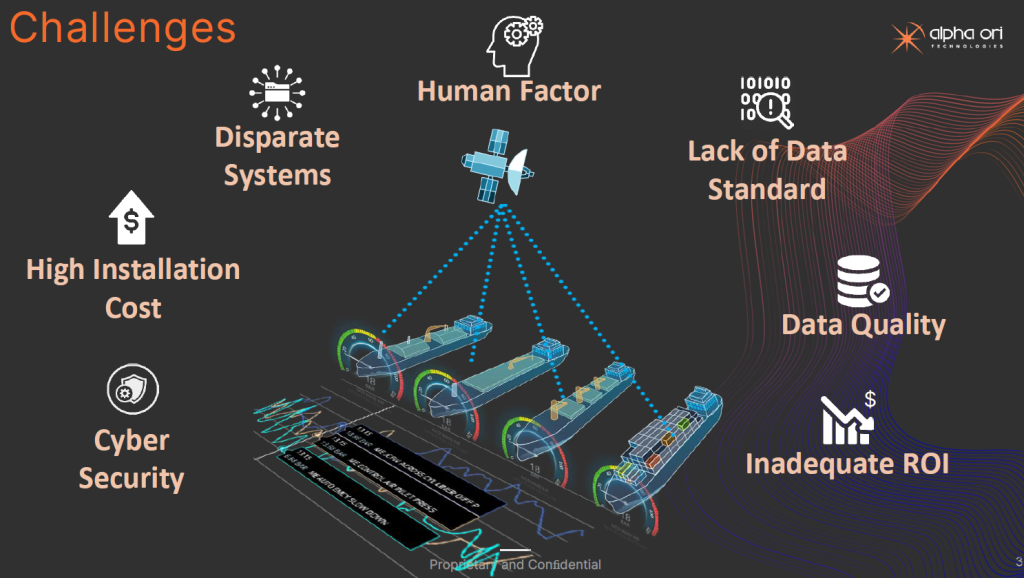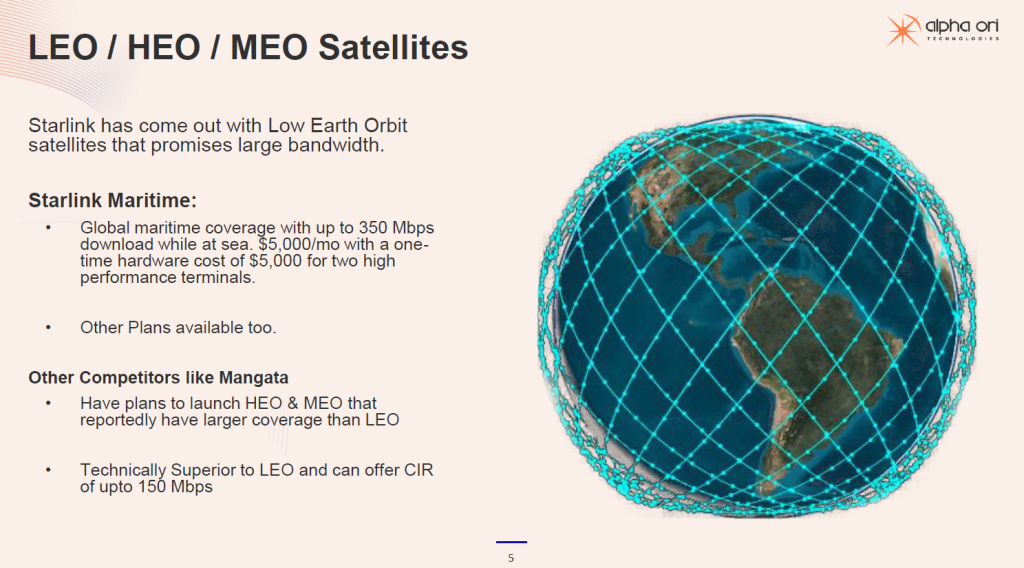During the 2023 SAFETY4SEA Singapore Forum, Sanjeev Namath, Chief Business Officer, Alpha Ori Technologies Pte Ltd, gave a presentation that delved into three critical aspects of navigating the evolving landscape of industry and technology.
The era of digitalization and transformation is not a mere industry buzz; it’s a tangible force reshaping the maritime landscape. The time has come for the industry to not just acknowledge but fully embrace digitalization as a means to enhance efficiency, productivity, safety, and the overall reliability of ship operations.
Challenges on the digital horizon
As we chart the course towards a digital future, we face challenging waters. Cybersecurity, a persistent concern, showcases the perpetual game of catch-up with hackers. Furthermore, high installation costs pose hurdles, emphasizing the urgent need for collaboration to drive down expenses.
Highlighting the substantial progress made in the digitalization of ships, the financial landscape has undergone a notable transformation. In the early stages of our digitalization endeavors around 2016, the costs were considerable, ranging from approximately $150,000 to $200,000 for the retrofitting of existing ships. However, with advancements and increased adoption, the financial barriers have significantly decreased. At present, the costs have reduced to a range of $50,000 to $70,000.

This may showcase a positive trend, but collaborative efforts are imperative, involving original equipment manufacturers (OEMs) collaborating with others in the industry to further bring down installation costs.
Furthermore, while significant strides have been made since the industry’s digitalization journey began in 2016, challenges like disparate systems, lack of data standards, and ensuring data quality and integrity persist.
Finally, there is the issue with Return on investment (ROI). Clients wish to see the ROI as soon as possible. However, digitalization demands a shift in perspective. It’s not a quick fix; it’s a long-term investment, a capital infusion into operational expenses.
Digitalization as a strategic investment
This shift requires more than just technological upgrades; it necessitates a holistic transformation of operational and business models. Without these foundational shifts and buy-in from all stakeholders, the true return on investment remains elusive.
Digitalizing to decarbonize
Moreover, the intricate link between digitalization and decarbonization takes center stage. While achieving zero-carbon fuel remains a distant goal, the journey itself offers opportunities to create value through digitalization.
As a result, establishing operational baselines and embracing mature energy efficiency technology solutions emerge as pathways to tangible improvements. There are solutions out there that can help organisations improve their operational efficiency by up to 10 to 15%.
A call to industry leaders
A resounding call echoes throughout the industry, directed at commercial operators and charters, to leave behind the split incentives and collaborate. The incentives are not effectively shared among the key stakeholders, particularly the charters and commercial operators positioned at the top of the value chain.
Achieving shared incentives necessitates close coordination among critical stakeholders, including charterers, commercial operators, ship owners, ship managers, and notably, the crew. The successful implementation of digitalization and energy efficiency technology solutions relies heavily on the crew’s active participation in acting upon the insights provided. Without the crew’s engagement, particularly in aspects like weather routing and speed optimization, the envisioned value cannot be realized.
Charting the course of trends
The industry is also characterised by emerging trends that will shape its future. Starlink, Amazon, and Mangata Systems loom on the horizon, promising superior technology for real-time connectivity between ship and shore, with more companies adopting the technologies each day.

Furthermore, there is the transformative potential of generative AI is spotlighted as a tool to harness vast volumes of data for creating unprecedented value. The potential of harnessing terabytes of data, encompassing shipboard, weather, and port congestion data, through generative AI is immense. This technological integration holds the promise of creating substantial value within the maritime landscape, showcasing the industry’s commitment to innovation and efficiency.
Harmonizing Change: Transforming operational models
As the maritime industry charts a course into the future, it must harness the winds of change brought by digitalization, technology, and collaboration to navigate these uncharted waters successfully. The future promises a connected, efficient, and sustainable maritime ecosystem, and it’s time to set sail towards this transformative destination.
The views presented are only those of the author and do not necessarily reflect those of SAFETY4SEA and are for information sharing and discussion purposes only.
Above article is a transcript from Sanjeev Namath’s presentation during the 2023 SAFETY4SEA Singapore Forum with minor edits for clarification purposes.
Explore more by watching his video presentation here below






























































